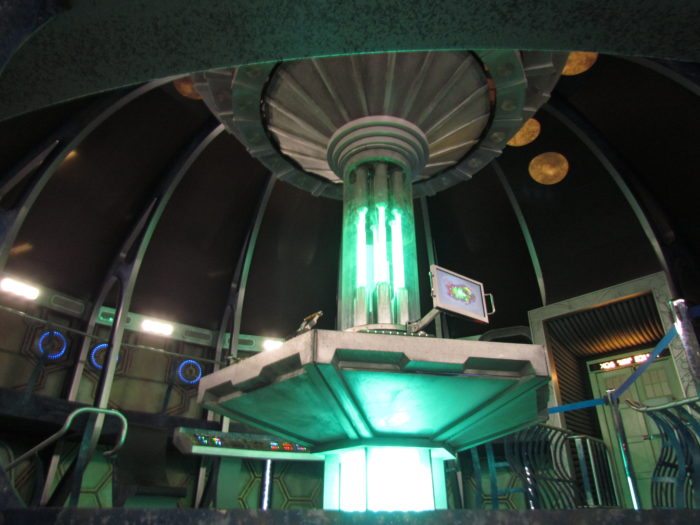Science Explained: Could the TARDIS actually exist?
Doctor Who is back on the box, and Peter Capaldi has been joined by a new companion in the form of Bill Potts, a uni cafeteria worker who is enthralled by his lectures. In the first episode, fleeing from the monster of the week, the Doctor and Bill take to his TARDIS to escape. It’s then that we see a now-customary moment – the companion’s shock that the time machine is bigger on the inside. But is such a thing possible?
The TARDIS’ outside is the size it appears to be, but it functions as a doorway…
The easiest explanation would be that there is some kind of space-time projection between the TARDIS’ interior and exterior. The TARDIS’ outside is the size it appears to be, but it functions as a doorway, connecting to the inside (which is stashed away somewhere else in the universe) via a wormhole. Thus, when the TARDIS travels, the only thing that’s genuinely changing location is the access point. The physics behind wormholes is sound, so the only difficulty is keeping the wormhole open and connected.
Wormholes are good, but they don’t really fit the TARDIS we’ve seen in Doctor Who. Perhaps we should look in-universe for an explanation of this miraculous feature. Well, the show puts it down to a key Time Lord discovery called trans-dimensional engineering. The Fourth Doctor tried to explain the principle to one of his companions with the use of two cubes. Imagine two cubes, one larger than the other. If the larger one were further away, it would appear smaller from the viewer’s perspective, and so able to fit inside the smaller one.

Image: Rob Clarke / Wikimedia Commons
The D in the TARDIS’ name stands for ‘dimension’ (the entire thing is Time And Relative Dimension In Space), and it is to extra dimensions we should look in order to think about this. If the TARDIS were in fact a four-dimensional object (some kind of 4-dimensional hypercube, or tesseract), it would fit the description that the series has provided (although it could easily have more than four dimensions too). When the characters see a blue phone box, what they’re seeing is the point at which the tesseract insects with the 3-D world.
…we lack the ability to genuinely comprehend and picture higher dimensions.
Let’s move everything down a dimension to think about this. Imagine a 2-D world, in which all living things are lines and polygons (such as Flatland in Edwin Abbott Abbott’s eponymous text). Now, imagine placing a cube on this world. We, in our 3D world, are able to see it as a cube, but the 2D citizens are only able to visualise it as a square. This square is then a bridge of sorts to the third dimension – imagine that there was a tiny strip of paper stuck up from this square. It would enable the 2-D citizens to head for miles into this square, so long as there was a strip of paper, and this is the same principle as that of the TARDIS.
So, could we build a TARDIS? Sadly not – even thinking about extra dimensions in a non-mathematical manner is enough to melt your mind as, like the citizens of Flatland, we lack the ability to genuinely comprehend and picture higher dimensions. With that in mind, building a higher dimensional craft may be a bit of challenge (unless there’s a real life Gallifrey knocking about somewhere, that is).

Comments (1)
Not to mention other problems. I remember Peter Capaldi’s doctor saying that the TARDIS has some type of limiter. He said that if he landed on Earth with it’s actual weight, it would crack the Earth. Equivalent to landing a large planet on the Earth or something like that.